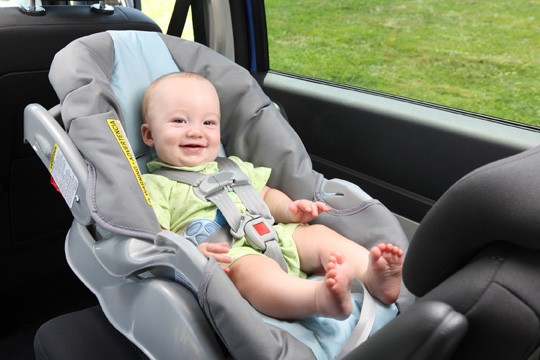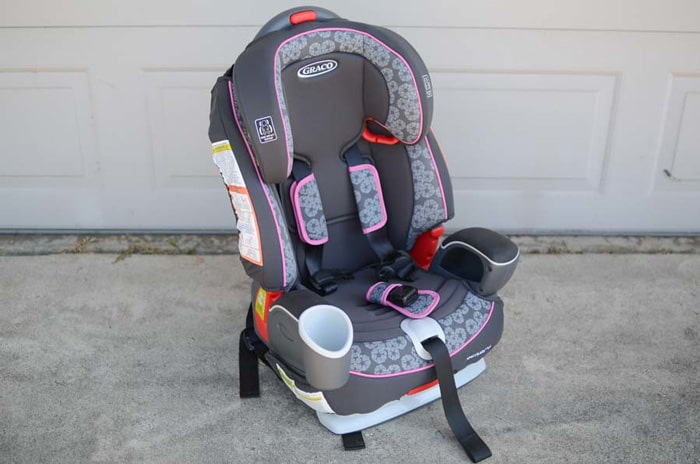Rocks for Kids
Baby Car Seat Types: Get The Right Car Seat for Your Little One
As an Amazon Associate I earn from qualifying purchases.
According to the CDC, the risk of your little one dying in a car accident goes down by up to 71% if he/she is securely strapped in a car seat. (Source)
This shows why a car seat is a must-have when traveling with your baby in a car.
Unknown to many parents, however, car seats exist in different types. And the right type for your baby will depend on their age, weight, and even size/height.
Choosing the right car seat for your baby will ensure maximum safety.
Below, we take a closer look at the 3 MAIN types of baby car seats you’ll find on the market today.
Infant car seat
As the name suggests, an infant car seat comes designed for use with infants.
Who’s really an infant? You might wonder…well, if the age of your little one lies anywhere from birth to around 2 years of age, then they’re considered infant

It’s within this age gap that the weight limit of an infant car seat is set. The weight limit of most infant car seats falls between 22 and 35 pounds.
Keep in mind that this type of car seat comes designed for use in the rear-facing position ONLY.
Most infant car seat models require you to strap them directly to your car or use a base that stays strapped into your car seat. To ensure an easy, secure fit for different cars, you might need to invest in multiple bases for various cars.
Amazingly, this seat also doubles as a convenient baby carrier outside the vehicle. It features a handle that enables you to safely carry it with you to any place, say to the grocery store, a walk around the park, and more.
What if your baby outgrows this car seat before the 24 months (2 years are over)?
This case can happen for babies with a higher growth rate—they outgrow the car seat faster, reaching the maximum weight or height limit of the seat. In this case, you’ll need to switch to a seat designed for older babies and toddlers.
IMPORTANT: When your baby reaches the height or weight limit for infant car seat, you should move them to a rear-facing car seater for older babies because it’s a safer position for young ones less than 3 years, according to the National Highway Traffic Safety Administration.
Convertible car seat
With your time, your baby will outgrow the infant car seat. This can be before or after the 2 years old age limit.
When this happens, you need to transit into a bigger car seat, which is the convertible car seat. The biggest advantage of this type of car seat is that you can use it from birth all the way up to the point when your baby outgrows car seats—giving you the real value for your investment!
Convertible car seats are designed for use as rear-facing or front-facing positions. However, we urge you to stick to the rear-facing position if your baby is less than 3 years old as it ensures more safety. (they can support between35 to 50 pounds in rear-facing position).
For 3plus years old babies, you can use the seat in a front-facing position without any worries about the safety of your baby. (they can support between 40-65 pounds or more, in forward-facing position).
Unfortunately, convertible car seats are NOT portable, and you can’t use them as baby carriers. Also, they don’t come with a base, and you can’t easily move them from car to car.
Booster seat
After your child outgrows the convertible car seat, it’s time for them to graduate to a booster seat.

The good news about a booster seat is that your young one can use it until they hit the age where they don’t require a car seat anymore.
How the booster seat works?
Unlike the previously discussed car seats, this one might not come with integral harness for holding your young one in place. Instead, your child relies on your car seat belt (which goes around him/her and the seat) to secure them in place.
The work of the booster seat, therefore, is to raise your child’s seating position (hence the name “boost”) to enable the car belt to fit them properly.
Most models come with red indicators or slots to give you an easy time positioning your car seat belt. For the ultimate security and safety, make sure the belt feels as tight as possible around your child; ensure the lap belt goes over the pelvic region, and not the stomach; and ensure the diagonal strap rests over the shoulder and not on the neck.
Quick Tip: Before you get that booster seat for your young one, make sure he/she meets the weight and height limits allowed in the forward-facing baby car seats. Also, ensure the child is old enough to ride without a harness. He ought to stay in the booster seat throughout the journey with the seat belt properly strapped in place.
3-in-1 car seats
You can also come across 3-in-1 (also known as all-in-one) car seats on the market. These models are similar to the convertible car seats, only that they also double as booster seats.
The biggest benefit of investing in this type of car seat is that it’ll grow with your young one all the way from the rear to front-facing to booster seat until your child can becomes old enough to ride with just the car seat belt.
When to stop using the baby car seat?
The right time for your child to graduate from a car seat to using the car seat belt is when they attain a height of 4 feet 9 inches. This usually falls between the age of 8-12 years. While still at it, make sure your child rides in the back seat until she attains 13 years of age.
Final Word
A baby car seat is a crucial investment if you plan to be riding with your baby in the car. It helps offer safety and reduce the risk of death in case of an accident.
Knowing the right type of car seat to use for your baby’s specific age, weight, and height is crucial in ensuring they enjoy maximum protection during the ride.
In the above guide, we have just outlined the 3 main types of baby car seats you’re likely to come across at the market, and the suitable baby age to use with them.
Amazon and the Amazon logo are trademarks of Amazon.com, Inc, or its affiliates.
Source: https://www.rocksforkids.com/baby-car-seat-types/